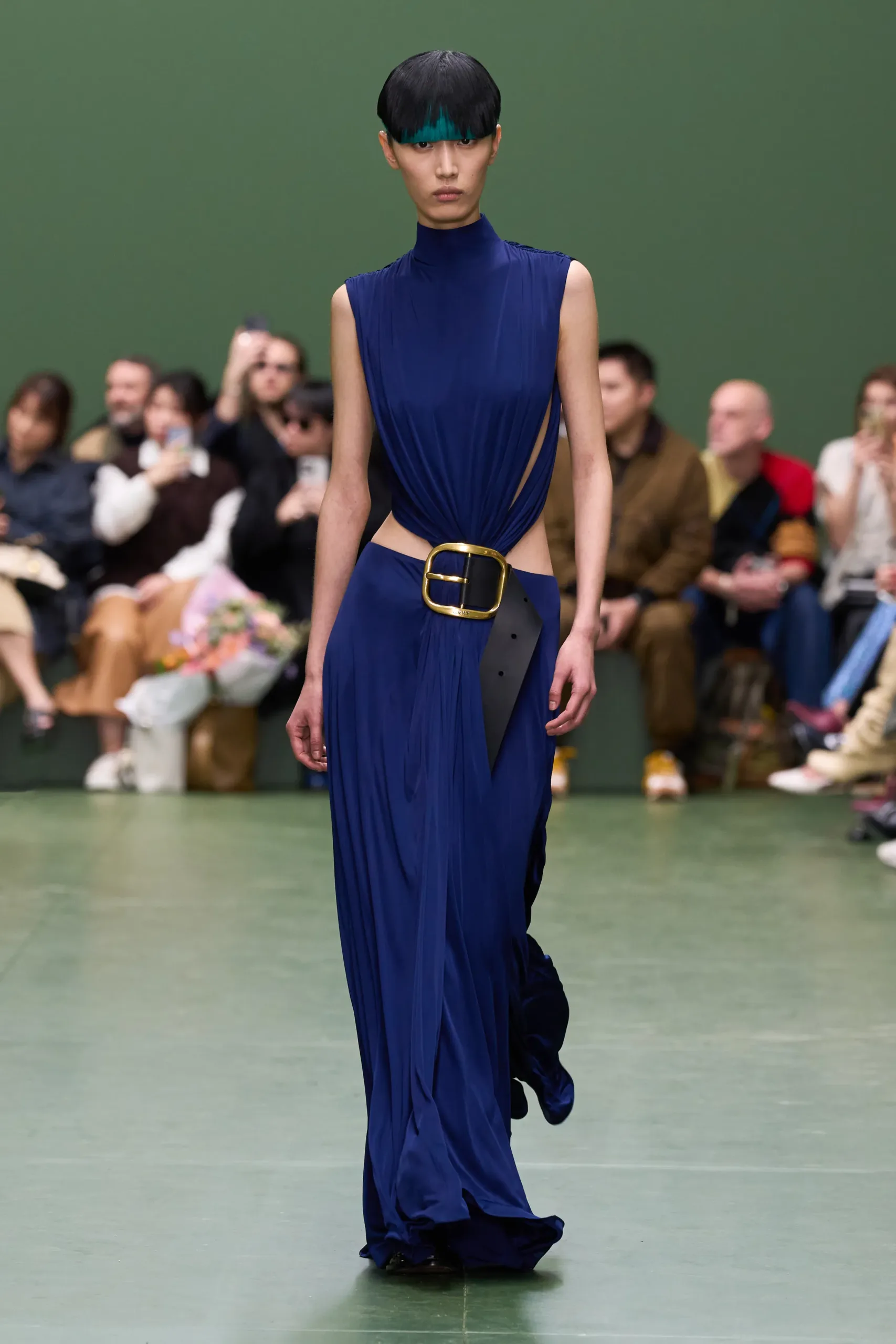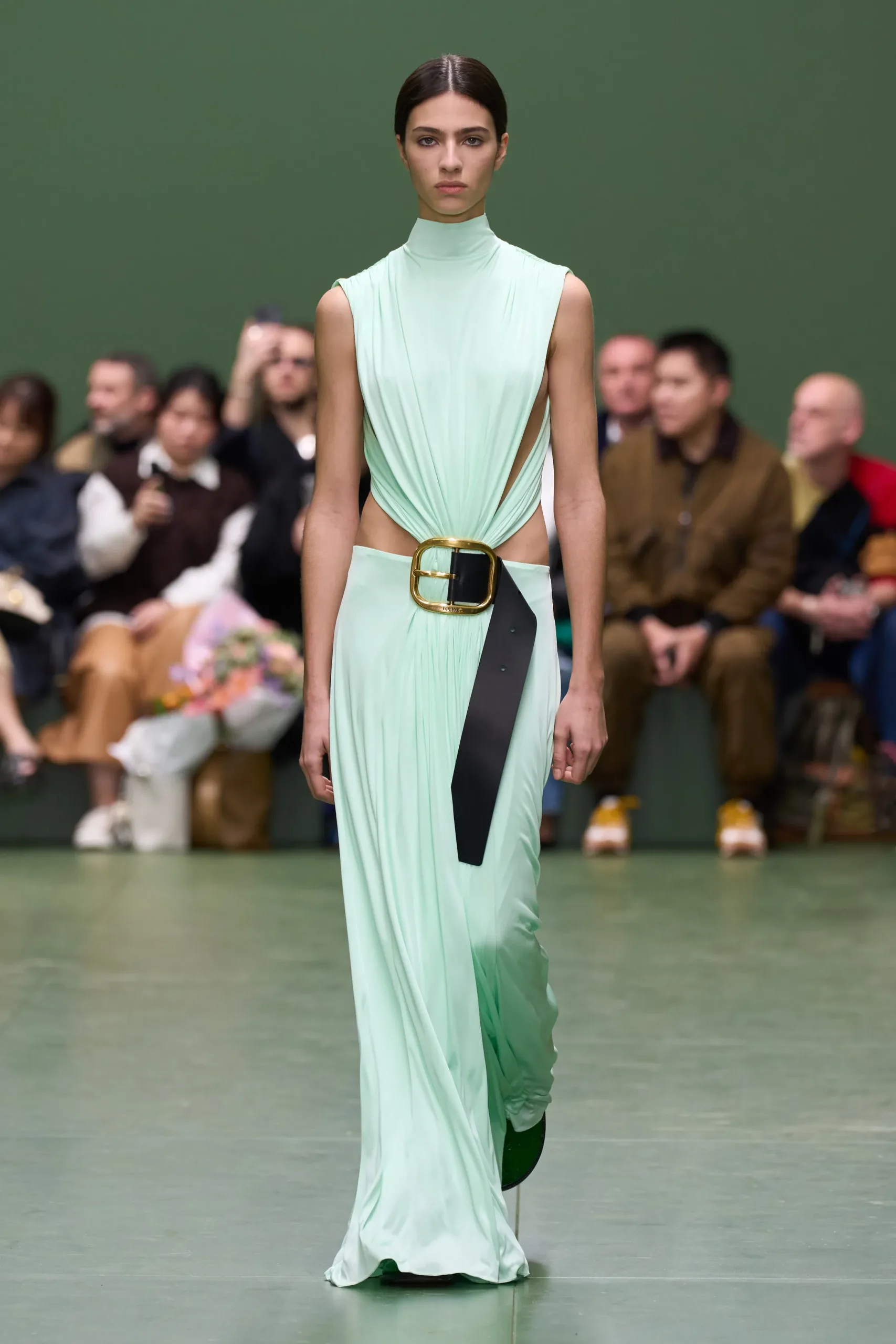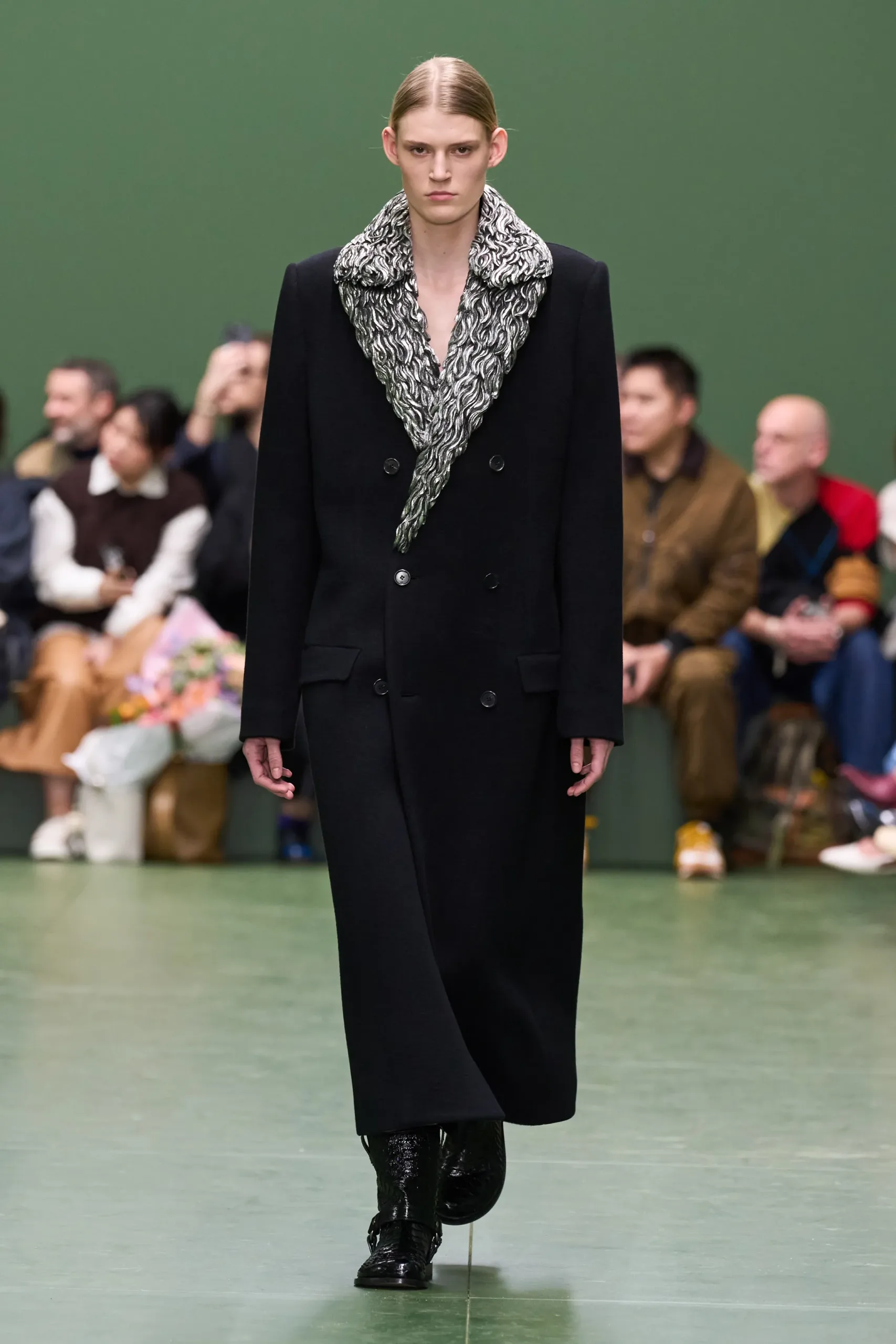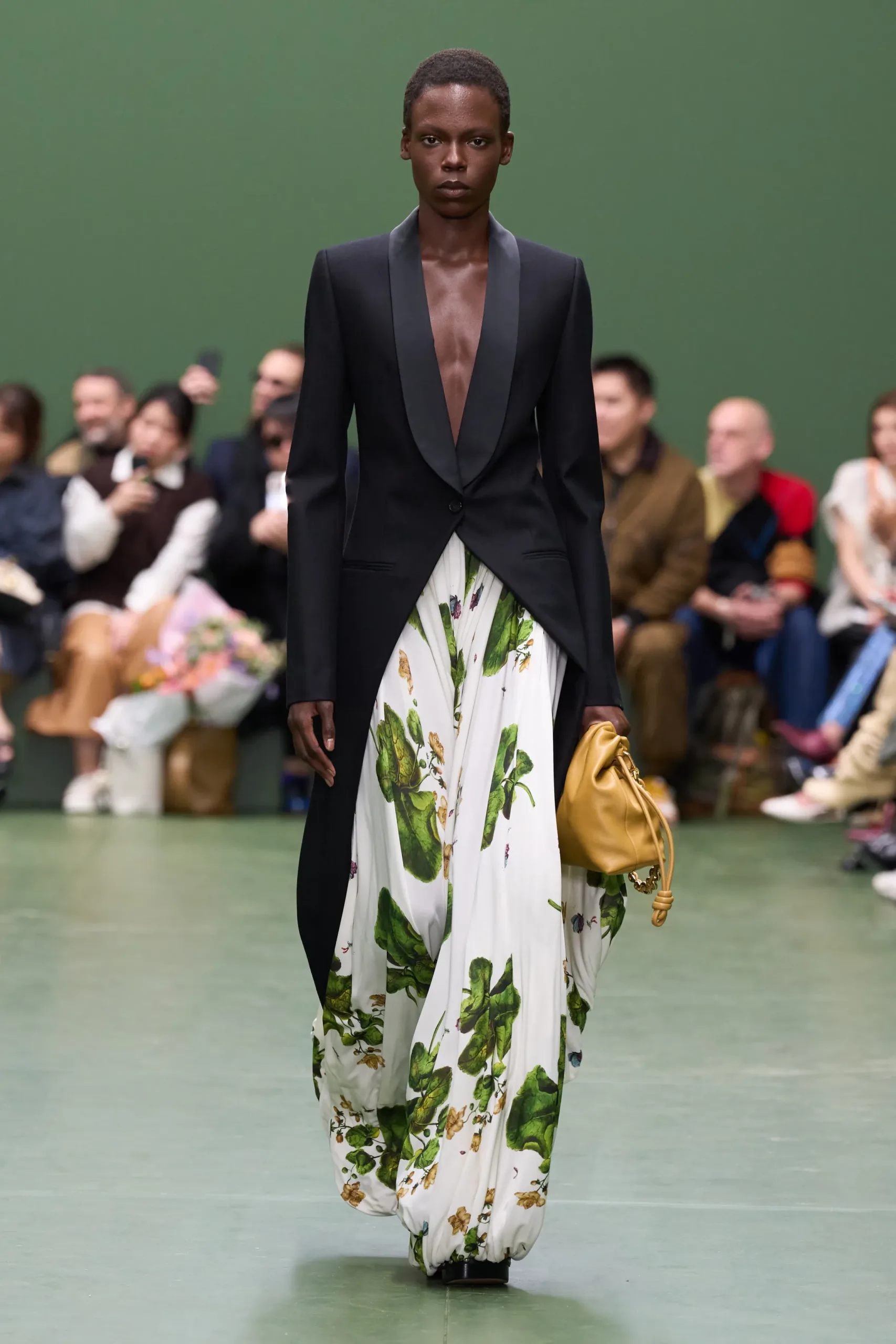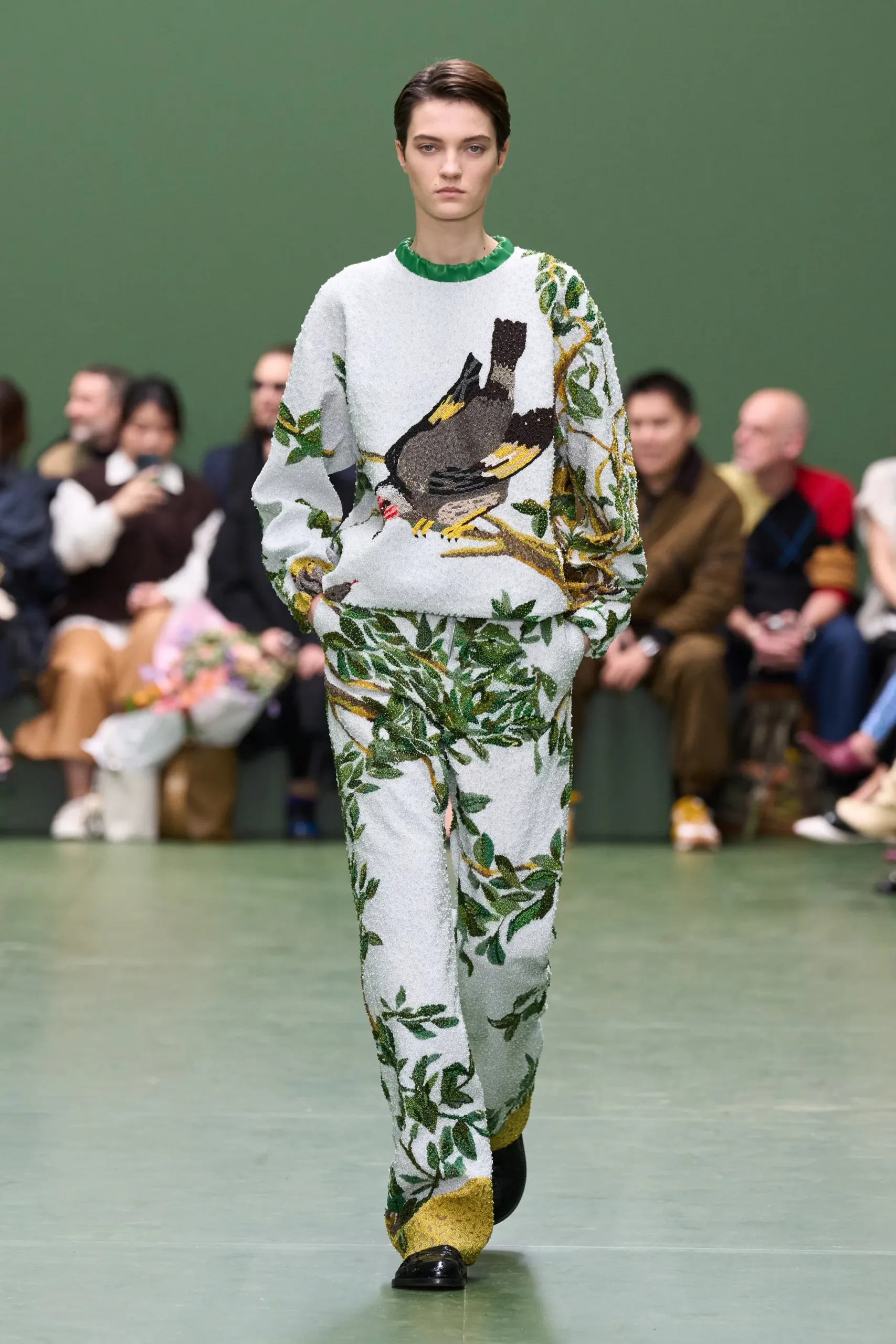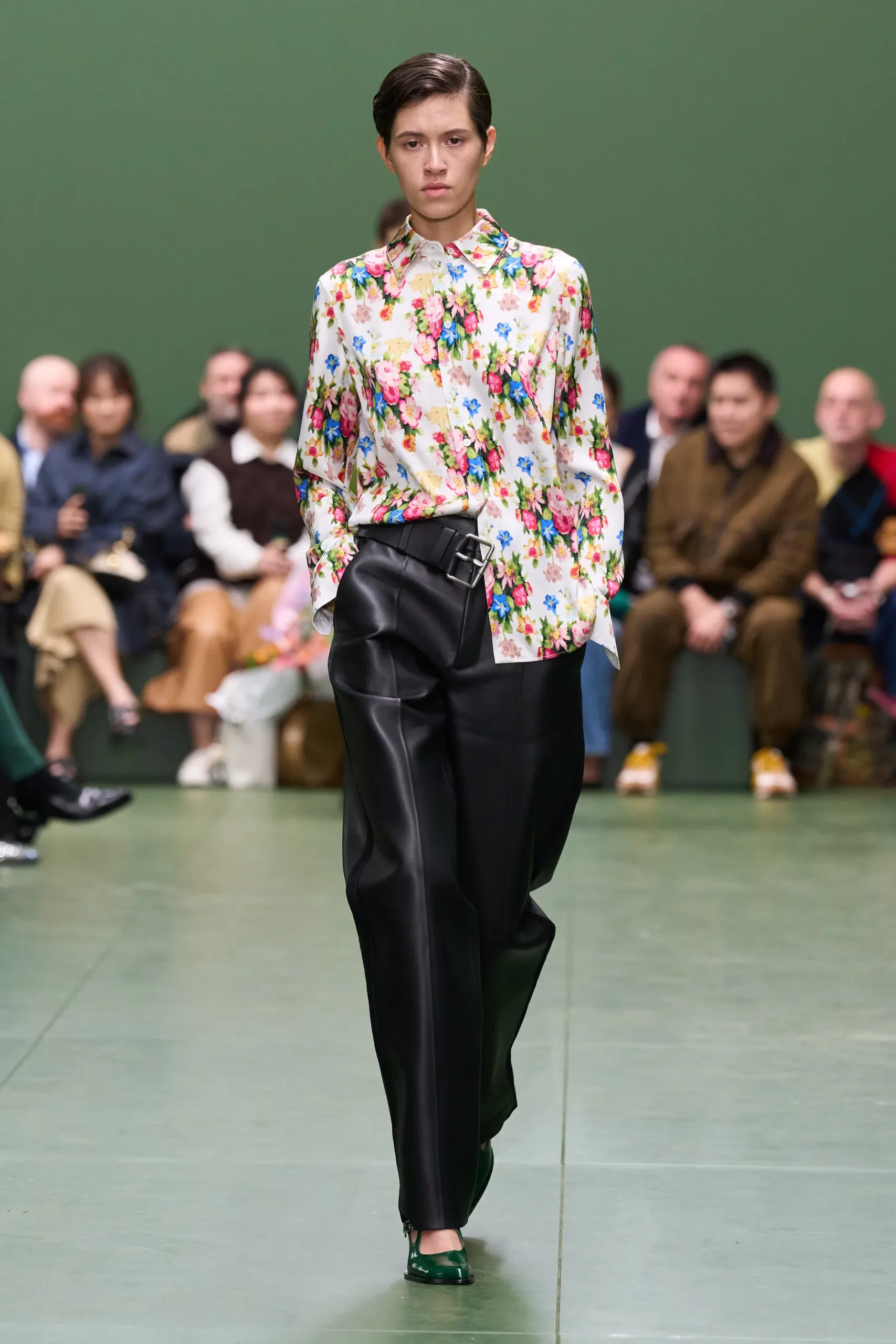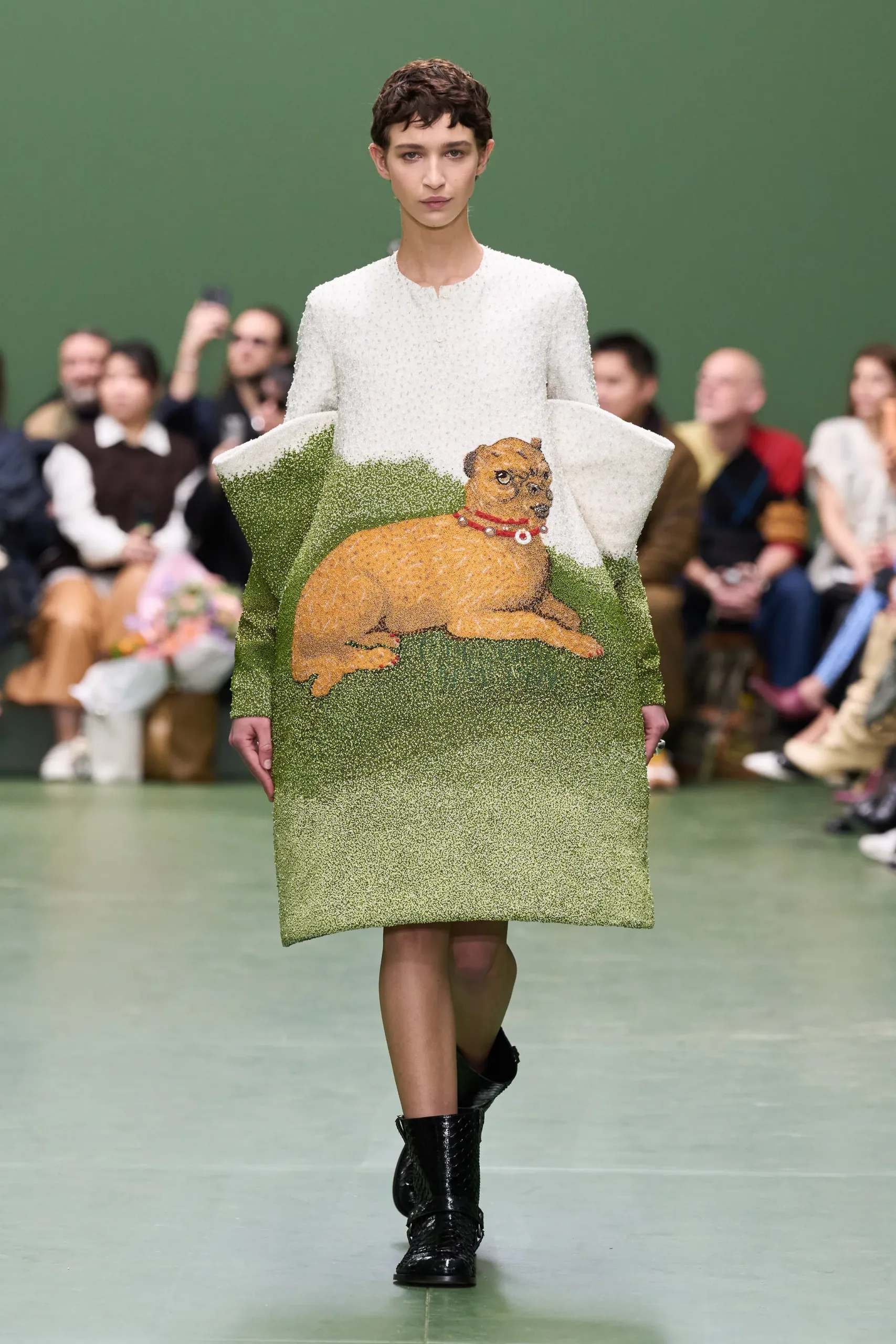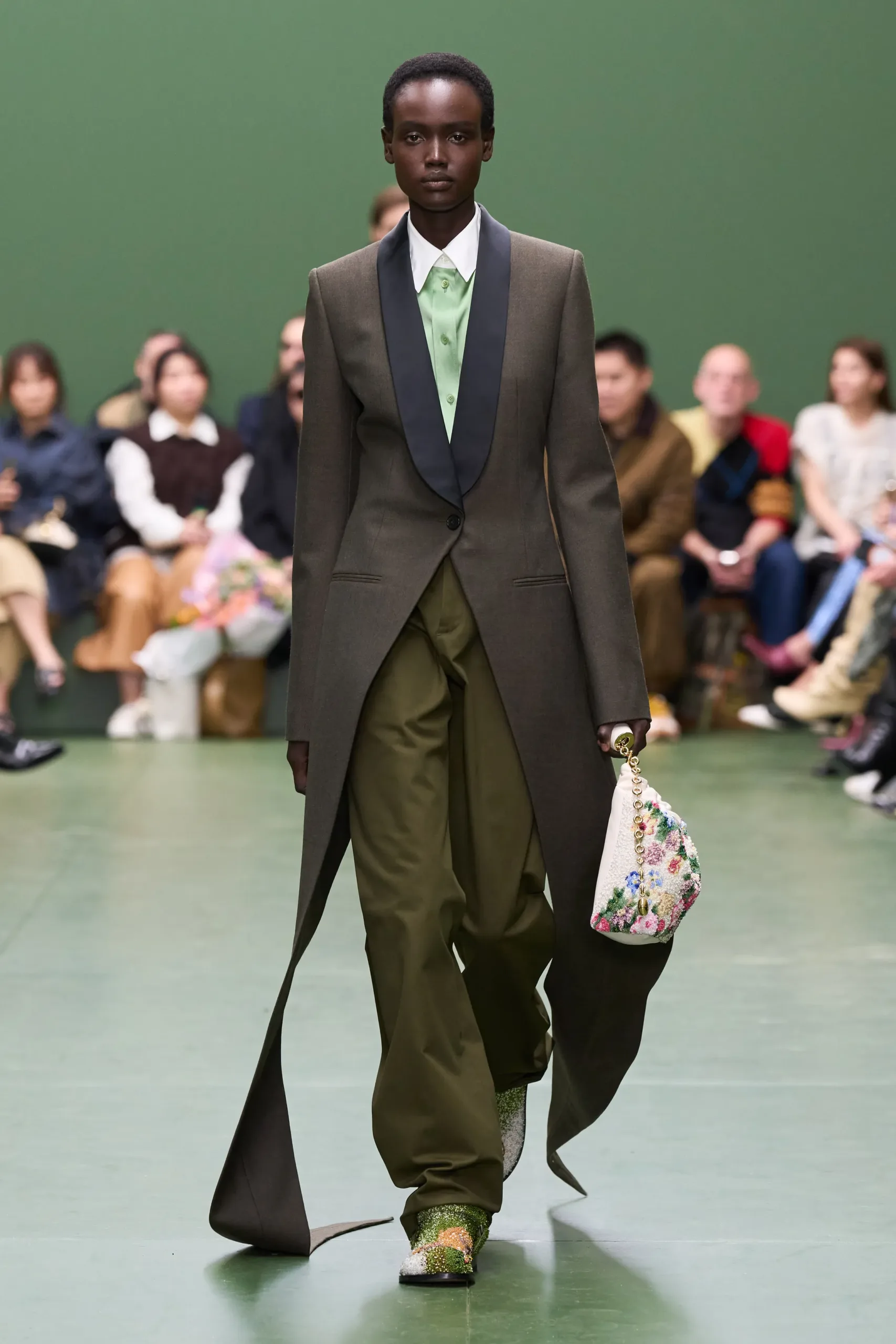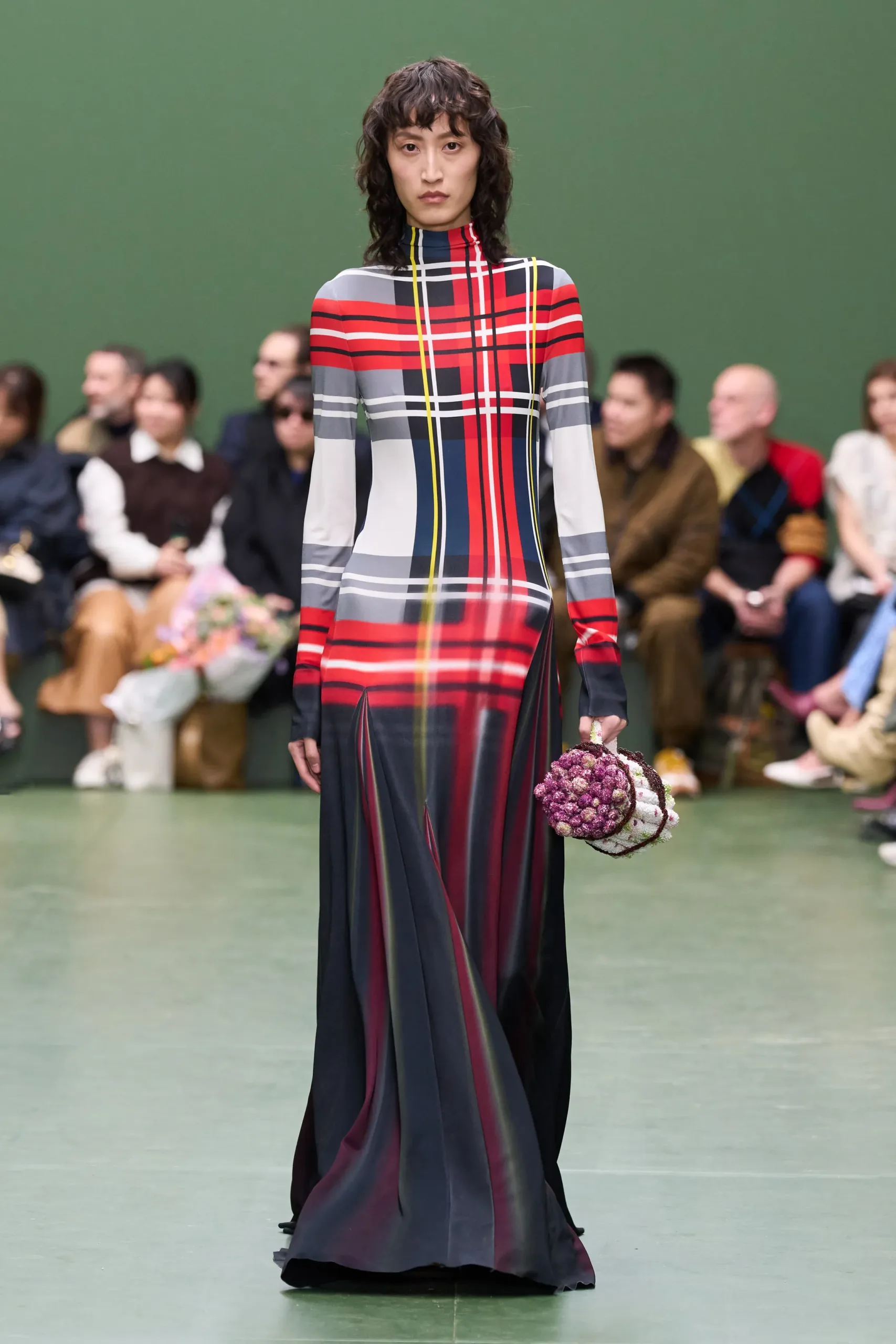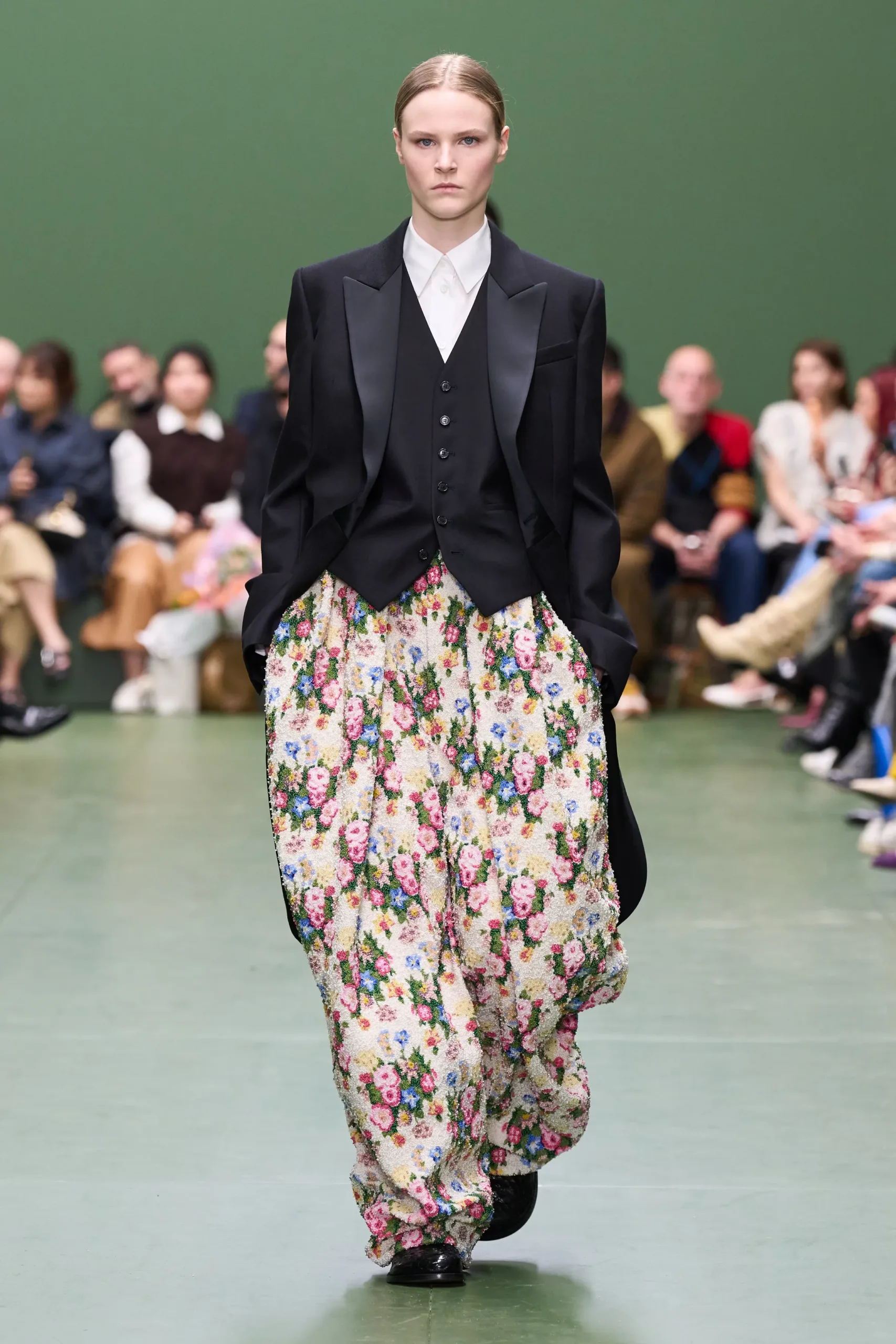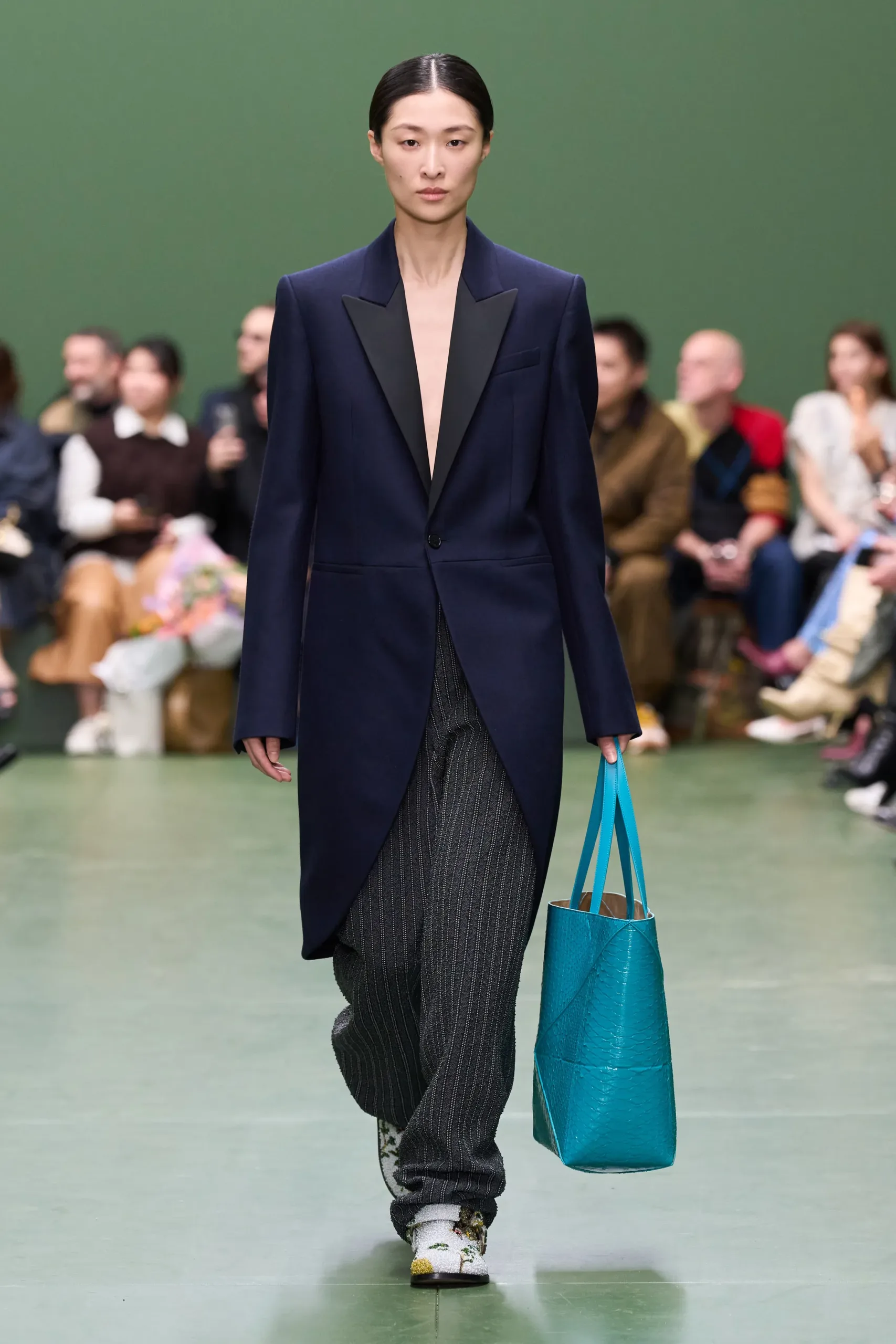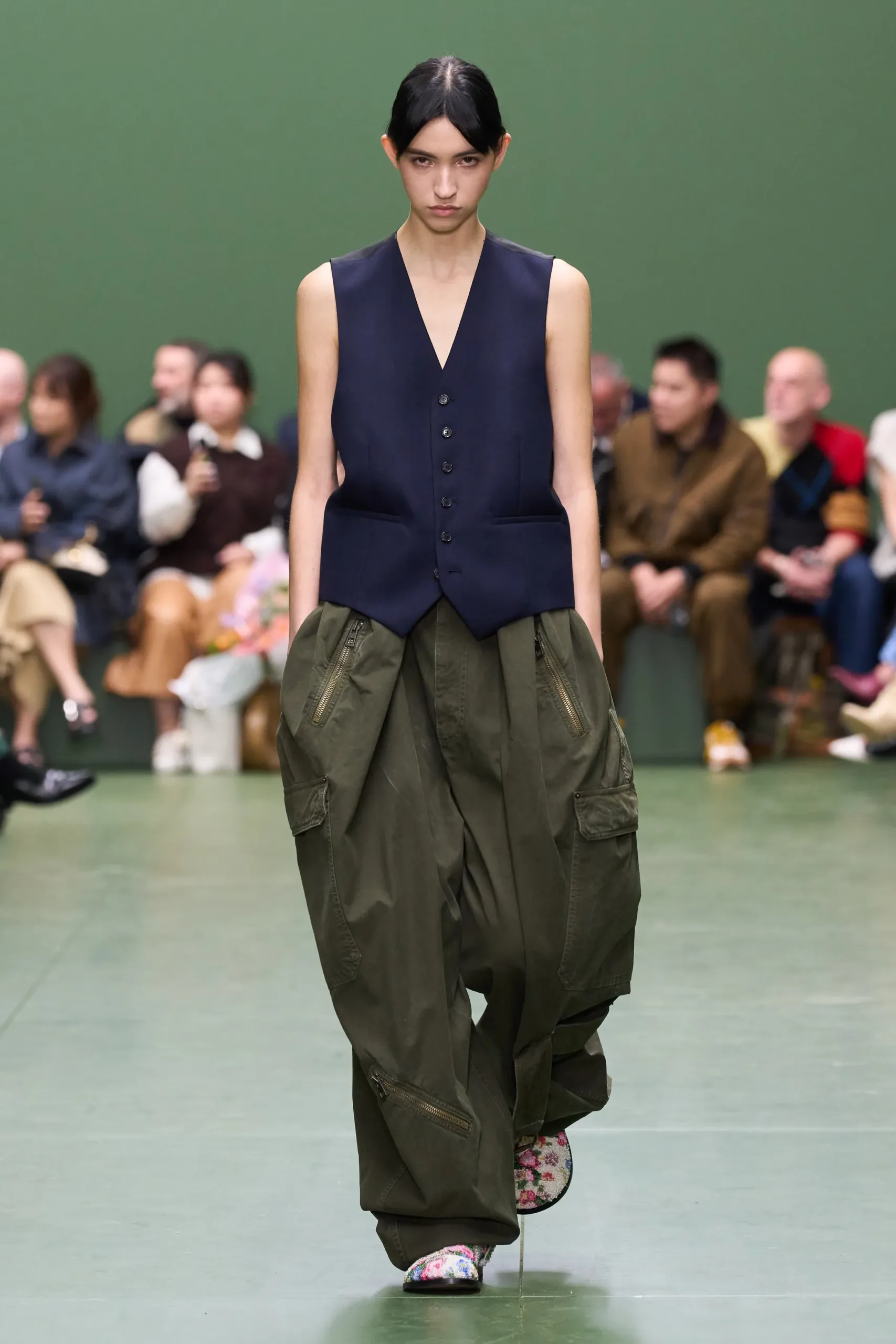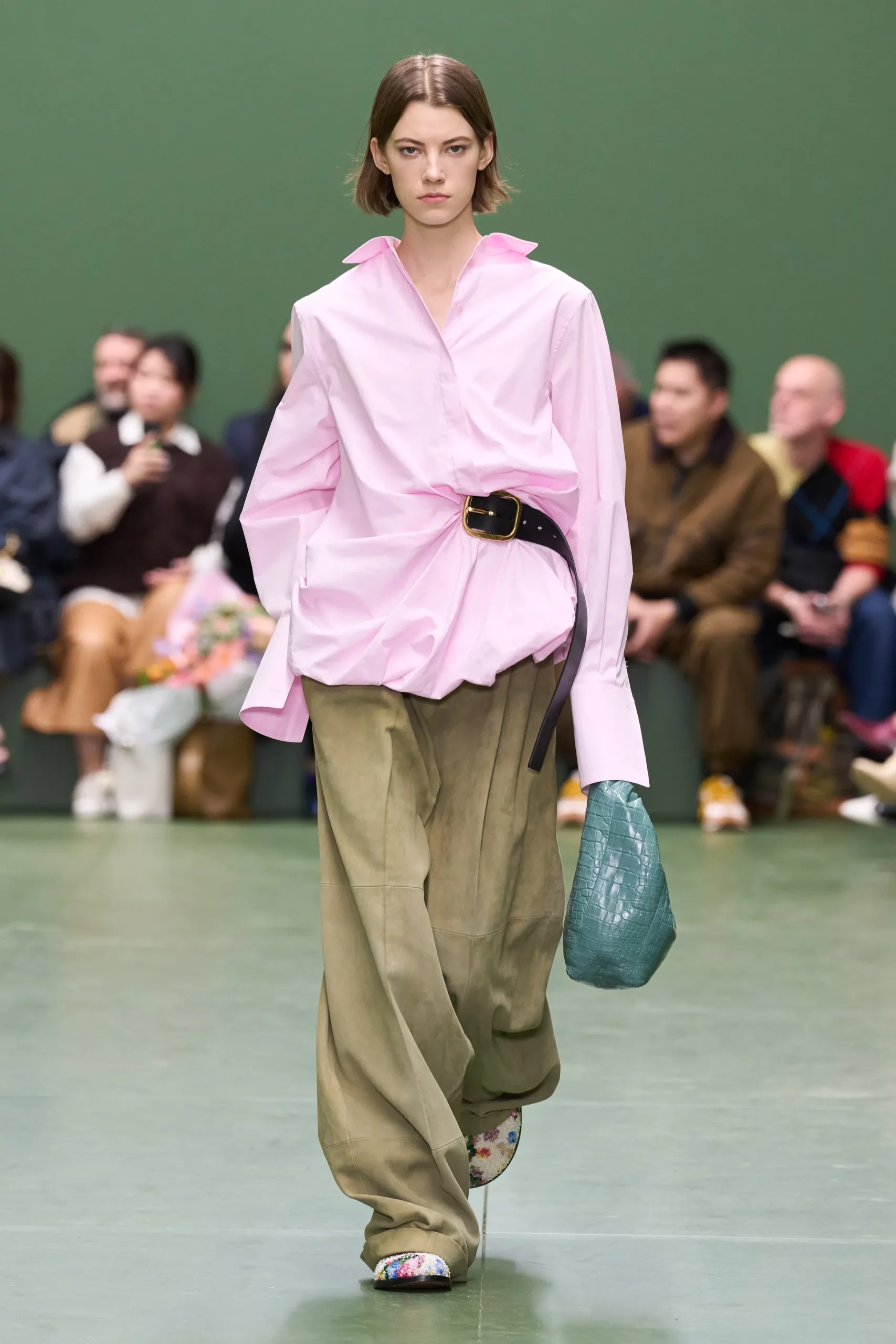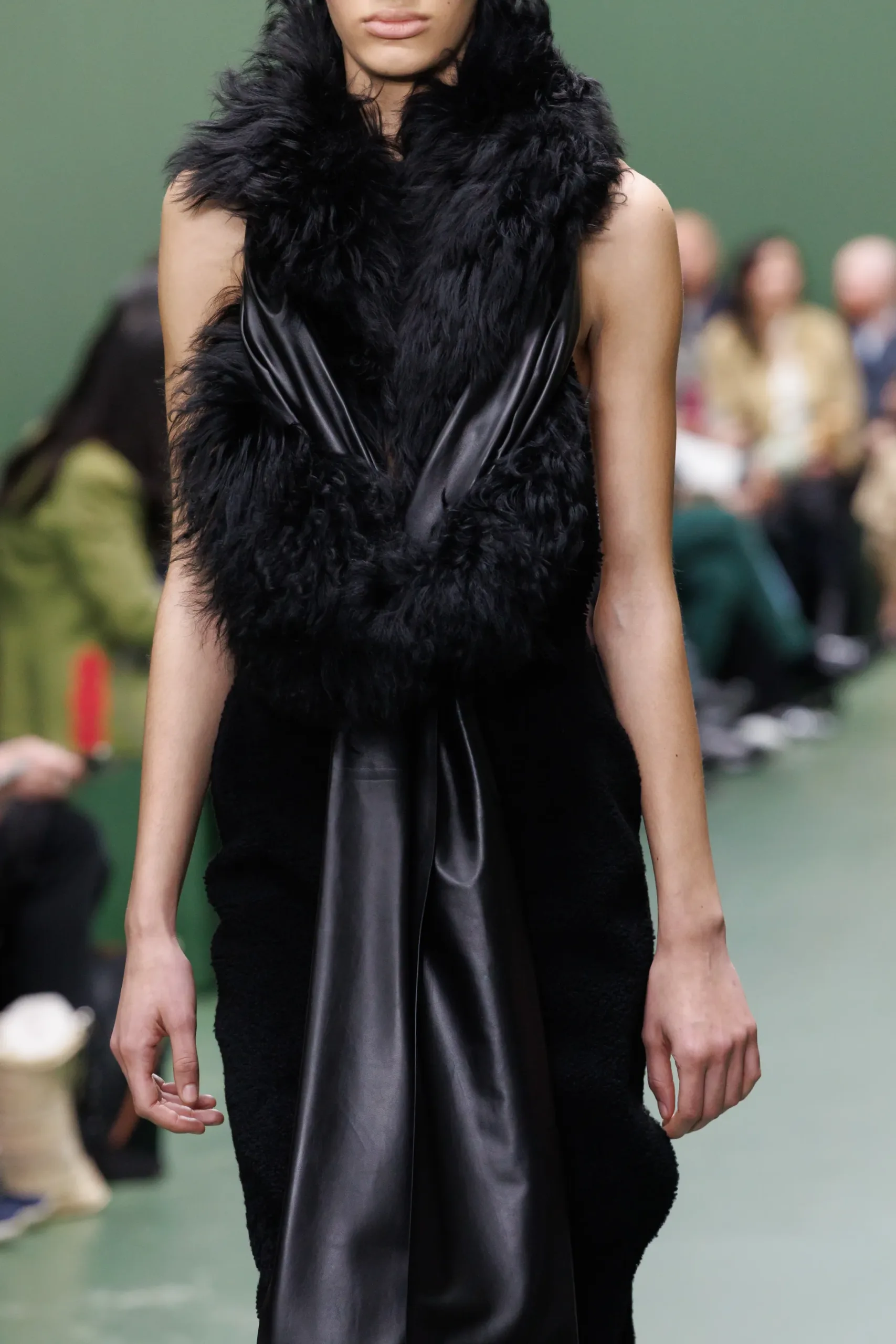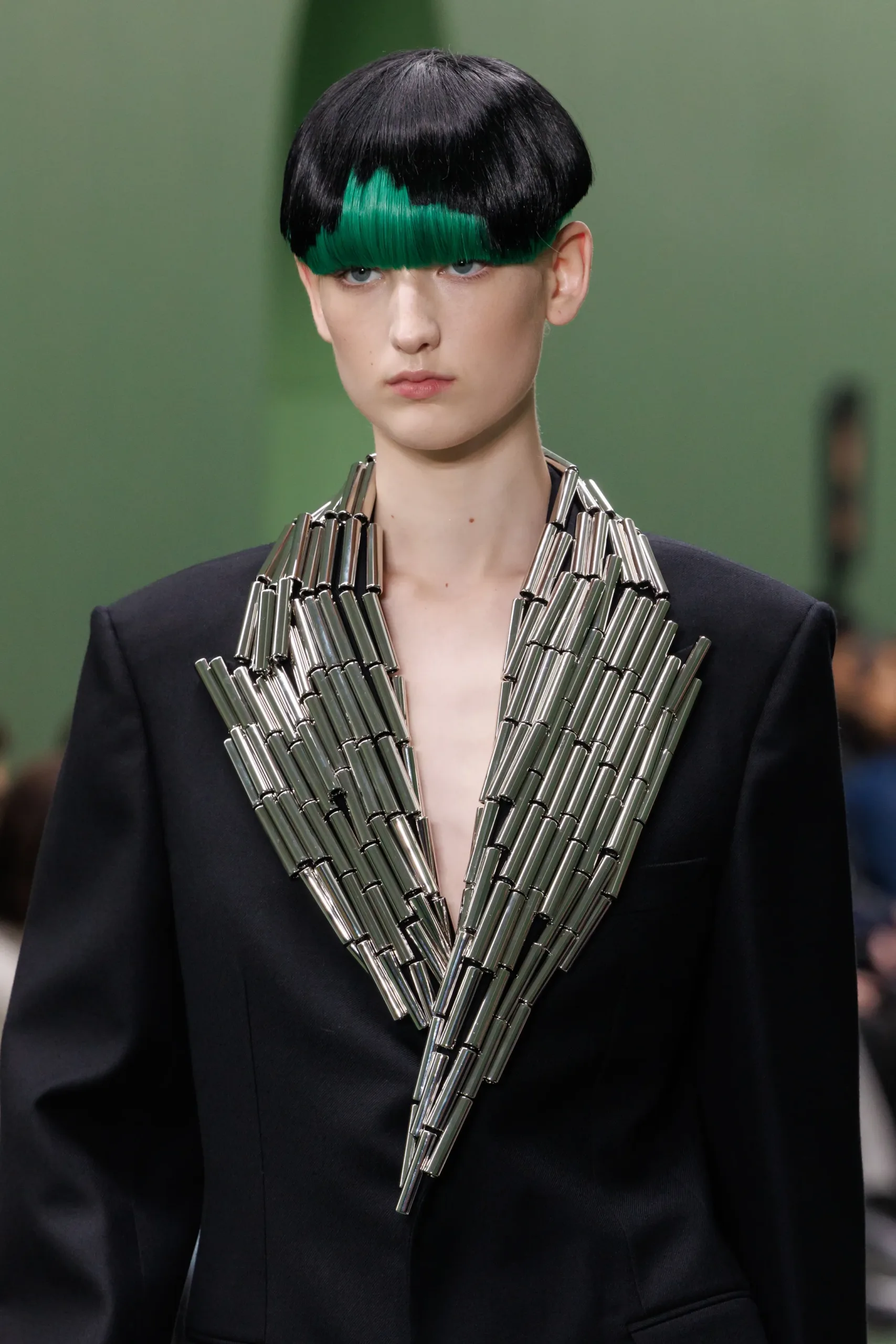Sorry to be basic, but I must blurt this out: Jonathan Anderson showed a Loewe collection for fall that was, frankly, stuffed with brilliant clothes—chic flowing cutaway jersey dresses, immaculate tailcoats and tailoring, flower and vegetable prints, balloon-y pants, novelty amusement accessories, and bluntly ideal versions of the best, non-messed-about shearling aviator jackets and double-breasted military leather coats in the business.
That’s what I saw. Anderson is effortlessly at the peak of his game. His ability to nail avant-garde pairings of things that ought not go together but suddenly do, his intense orchestration of craft, and his never forgetting of the über-ordinary wearable item creates a unique language of fashion thrills and practicality.
But then, as we soon found out in Anderson’s postshow debrief, the critical framework of this show—set in a private exhibition of small landscape and domestic scenes by the reclusive late American painter Albert York—turned out to be whole lot more meta than meets the eye. It was Anderson’s meditation on the meaning of luxury; specifically a zooming in on the interior landscapes and extremely decorative antique objects collected by wealthy Americans. “I started exploring this idea of provenance and why we buy things and why things come to have meaning,” he said. “The idea of an outsider looking into a world that we don’t experience.”
Anderson had discovered that Jackie Kennedy owned several of York’s extremely rare paintings (and he owns one himself, Landscape With Three Trees and a Pond, which he reproduced on a canvas print as the show invitation). Perhaps it seemed surreal to him that work by an artist so detached from society and dedicated to depicting the simple life—nature, flowers, and dogs—should end up as treasures in high-society settings.
Anyway: Then Anderson’s wildly associative mind was shooting off, looking at the insanely ornate collectibles—elaborate china, tapestry embroideries of pets, Chippendale furniture—that women interior designers “specifically of the 1920s” placed for their clients in their Upper East Side apartments.
And there we have the provenance behind the Loewe prints of chintzy fabric and wallpaper flowers, the painted radishes, buttercups, and foliage of English early-18th-century Chelsea porcelain. A silvered collar on a gray cashmere overcoat, masquerading as look-alike fur, turned out to be carved wood. Trompe l’oeil “caviar”-beaded embroidery smothered everything from tracksuits and boots to curtain-fabric balloon trousers and bags. One was a fully detailed bunch of antique Chelsea porcelain asparagus. A replica of a replica from nature, served up once more as the ultimate luxury fashion object for the 21st-century collector.
All this could have tipped over into the too much without Anderson’s brilliant styling of formal swallow-tailed morning coats, casual suede chino look-alikes, and exaggeratedly voluminous army pants in the mix. Of course, all of the above is also state-of-the-art Loewe luxury quality fashion—only attainable by the few. But Anderson’s knack is this: At the end of the day, for all his play on the unreal, the way he deals with fashion still transmits all sorts of ideas for how women will really want to dress.
BY SARAH MOWER
March 1, 2024
Vogue.com


